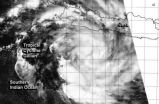(Press-News.org) New research by USC Norris Comprehensive Cancer Center scientists demonstrates that measuring circulating tumor cells (CTCs) – the cells that spread cancer through the body – may be a better predictor of patient survival than the prostate specific antigen (PSA).
The research was published March 10, 2014 in the Journal of Clinical Oncology by a team led by Amir Goldkorn, M.D., assistant professor of medicine at USC Norris, part of Keck Medicine of USC. Goldkorn's team discovered that elevated CTC counts after chemotherapy indicated as much as a five-fold higher risk of death, and for patients whose CTCs dropped by 50 percent or more, the risk of death was cut in half. The study demonstrates CTCs are an important biomarker for cancer research and treatment.
"The significance of these findings is that looking at CTCs before and three weeks after the first cycle of chemotherapy is an early indicator of whether these men would do well with treatment and how long they may live," Goldkorn said. "This could help guide clinicians' treatment decisions and save patients from toxic treatment that won't help them."
According to the American Cancer Society, prostate cancer is the second most common cancer in American men. The society estimates that for 2014, about 233,000 new cases of prostate cancer will be diagnosed and about 29,480 men will die of prostate cancer.
Using blood samples from prostate cancer patients enrolled in phase 3 clinical trial, Goldkorn's team studied baseline counts of CTCs in blood samples before chemotherapy in 263 men. They then measured CTCs three weeks after chemotherapy and determined "hazard ratios" – the likelihood of a patient surviving after chemotherapy.
CTCs are a growing area of interest to many cancer researchers because these cancer cells are shed from tumors into the blood, spreading the cancer throughout the body. The theory behind Goldkorn's research was that isolating and analyzing CTCs could provide a powerful tool giving a snapshot of a patient's cancer at a certain place and time with no need for invasive biopsies.
CTCs are rare – 100 in a typical blood sample, compared to billions of red blood cells and millions of white blood cells. To streamline the isolation process, Goldkorn established a CTC core lab at USC Norris and worked with Yu-Chong Tai of CalTech to create microfilter technology to enrich CTCs in blood samples.
The research sprang from a 2008 phase 3 clinical trial conducted as part of the SouthWest Oncology Group (SWOG), of which USC Norris is a member. Although the drug tested in the trial did not show a positive outcome, the method used – drawing blood before and after treatment starts and counting CTCs – indicated that the number of CTCs could act as a biomarker to determine a patient's clinical course and help select the most appropriate therapy, Goldkorn said.
Goldkorn's team plans to follow up this study with more research analyzing whether choosing therapy based on changes in CTC counts can improve disease outcomes. At the same time, the researchers are molecularly analyzing CTCs to discover what genes they express and what mutations they possess to inform clinicians' courses of treatment.
INFORMATION:
The research, "Circulating Tumor Cell Counts Are Prognostic of Overall Survival in SWOG S0421: A Phase III Trial of Docetaxel With or Without Atrasentan for Metastatic Castration-Resistant Prostate Cancer," was funded by National Cancer Institute (NCI) grant number 4R01 CA141077-03 and the Hope Foundation.
Keck Medicine of USC research may point to better predictor of prostate cancer survival
2014-03-21
ELSE PRESS RELEASES FROM THIS DATE:
Cold snare polypectomy effective for removal of small colorectal polyps in patients on anticoagulants
2014-03-21
DOWNERS GROVE, Ill. – March 21, 2014 – In recognition of National Colorectal Cancer Awareness Month, GIE: Gastrointestinal Endoscopy has published a special issue for March on colorectal cancer. The issue includes a new study that compares cold snare polypectomy with conventional polypectomy for the removal of small colorectal polyps in anticoagulated patients. The study showed that delayed bleeding requiring hemostasis (stoppage of bleeding) occurred significantly less often after cold snare polypectomy than during conventional polypectomy despite continuation of anticoagulants. ...
Genetic signature reveals new way to classify gum disease
2014-03-21
NEW YORK, NY (March 21, 2014) — Researchers at Columbia University Medical Center (CUMC) have devised a new system for classifying periodontal disease based on the genetic signature of affected tissue, rather than on clinical signs and symptoms. The new classification system, the first of its kind, may allow for earlier detection and more individualized treatment of severe periodontitis, before loss of teeth and supportive bone occurs. The findings were published recently in the online edition of the Journal of Dental Research.
Currently, periodontal disease is classified ...
NASA sees Tropical Cyclone Gillian reborn near Java
2014-03-21
NASA's Aqua satellite passed over the reborn tropical cyclone known as Gillian on March 21 and captured a visible image of the storm, located just south of the island of Java.
Java is highly populated island of Indonesia that includes the capital city of Jakarta. Java is divided into four provinces, East, West and Central Java and Banten. There are also two special regions of Java called Jakarta and Yogyakarta.
The MODIS instrument that flies aboard Aqua captured a visible image of Gillian on March 21 at 06:55 UTC/2:55 a.m. EDT. The image showed bands of thunderstorms ...
NASA's Aqua satellite sees Tropical System 94W affecting Philippines
2014-03-21
The tropical low pressure area centered just east of the southern Philippines appeared more organized on visible imagery from NASA's Aqua satellite on March 21. System 94W appears to be developing and the Philippine authorities have already issued warnings on the system locally designated as "Caloy."
The MODIS instrument (Moderate Resolution Imaging Spectroradiometer) that flies aboard NASA's Aqua satellite captured a visible image of System 94W coming together east of the southern Philippines on March 21 at 5:25 UTC/1:25 a.m. EDT. The image revealed a circulation with ...
Deep ocean current may slow due to climate change, Penn research finds
2014-03-21
Far beneath the surface of the ocean, deep currents act as conveyer belts, channeling heat, oxygen, carbon and nutrients around the globe.
A new study by the University of Pennsylvania's Irina Marinov and Raffaele Bernardello and colleagues from McGill University has found that recent climate change may be acting to slow down one of these conveyer belts, with potentially serious consequences for the future of the planet's climate.
"Our observations are showing us that there is less formation of these deep waters near Antarctica," Marinov said. "This is worrisome because, ...
Pushing and pulling: Using strain to tune a new quantum material
2014-03-21
Research into a recently discovered class of materials shows they have the necessary characteristics to develop ultra-energy efficient electronics. Topological insulators (TI) are three-dimensional materials that conduct electricity on their surfaces, while the interior insulates.
Their surfaces are particularly unique because the motion of the electrons is "protected" by symmetry, meaning electrons will keep moving without scattering even when they encounter defects and contamination.
In fact, electrons on the surface of TIs move so robustly scientists are trying ...
Computers spot false faces better than people
2014-03-21
TORONTO, ON — A joint study by researchers at the University of California San Diego and the University of Toronto has found that a computer system spots real or faked expressions of pain more accurately than people can. The work, titled "Automatic Decoding of Deceptive Pain Expressions," is published in the latest issue of Current Biology.
"The computer system managed to detect distinctive dynamic features of facial expressions that people missed," said Marian Bartlett, research professor at UC San Diego's Institute for Neural Computation and lead author of the study. ...
Characteristics of lung cancers arising in germline EGFR T790M mutation carriers
2014-03-21
DENVER –Two studies are providing new insight into germline epidermal growth factor receptor (EGFR) T790M mutation in familial non-small cell lung cancer (NSCLC). The findings suggest the need for tailored approaches for early detection and treatment, as well as for genetic testing to identify carriers.
"These studies now solidify the fact that routine clinical management of lung cancer now has to include the awareness of this inherited cancer syndrome," wrote David P. Carbone, MD, PhD, President-Elect of the International Association for the Study of Lung Cancer ...
Ground-improvement methods might protect against earthquakes
2014-03-21
WEST LAFAYETTE, Ind. — Researchers from the University of Texas at Austin's Cockrell School of Engineering are developing ground-improvement methods to help increase the resilience of homes and low-rise structures built on top of soils prone to liquefaction during strong earthquakes.
Findings will help improve the safety of structures in Christchurch and the Canterbury region in New Zealand, which were devastated in 2010 and 2011 by a series of powerful earthquakes. Parts of Christchurch were severely affected by liquefaction, in which water-saturated soil temporarily ...
Forests crucial to green growth
2014-03-21
NAIROBI, Kenya (21 March 2014) ----The value of forests and tree-based ecosystems extends far beyond carbon sequestration; they are the foundation of sustainable societies.
A new report, launched in Jakarta, Indonesia on 21 March - the International Day of Forests – promotes REDD+ and the Green Economy as together providing a new pathway to sustainable development that can benefit all nations. It claims this approach can conserve and even boost the economic and social benefits forests provide to human society.
Building Natural Capital – How REDD+ Can Support a Green ...




